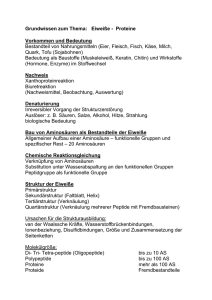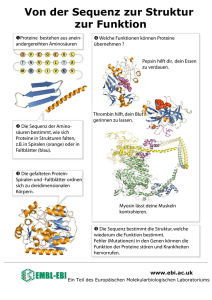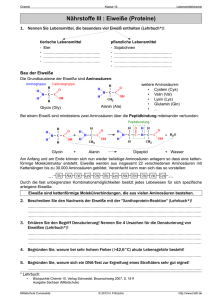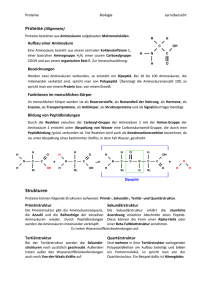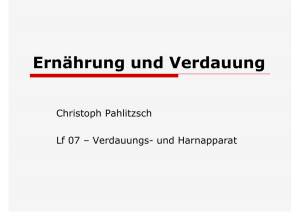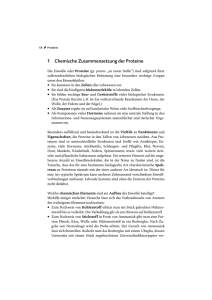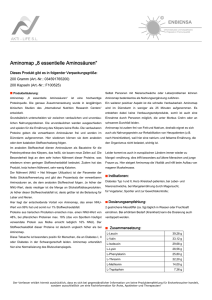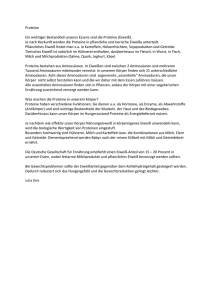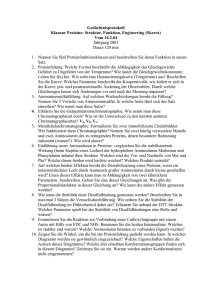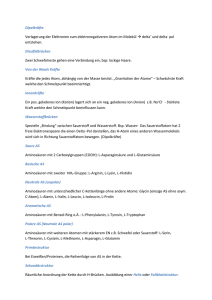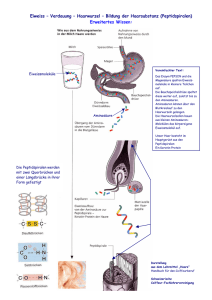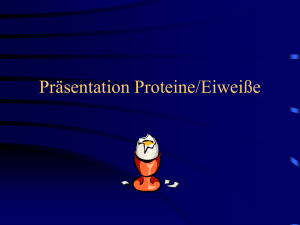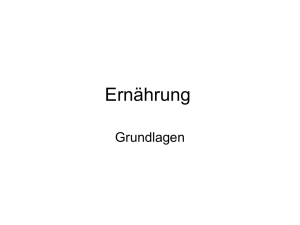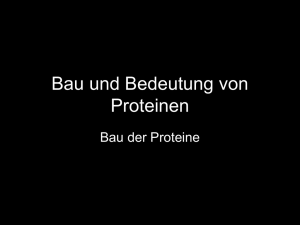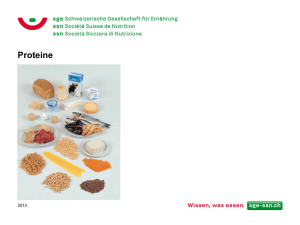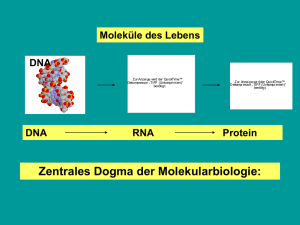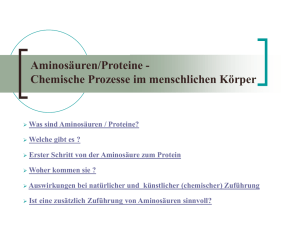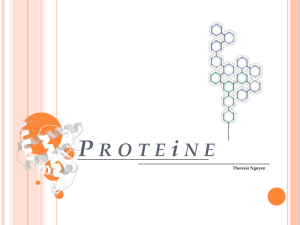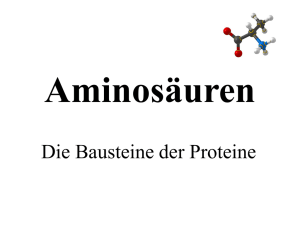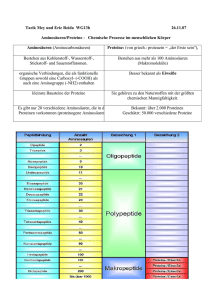Biochemie Proteine
Werbung
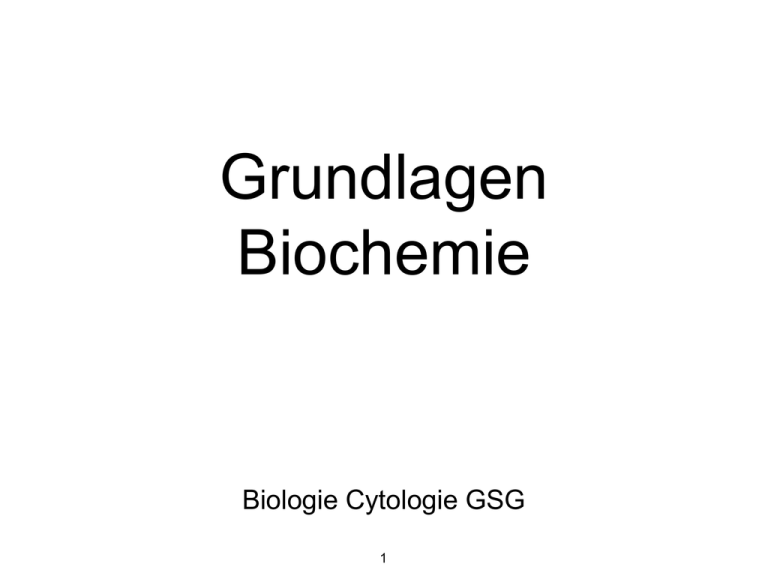
Grundlagen Biochemie Biologie Cytologie GSG 1 Proteine („Eiweiße“) Biologie Cytologie GSG 2 Proteine („Eiweiße“) 3 Proteine („Eiweiße“) • Aminosäuren bestehen aus einem • • • Rest Carboxygruppe: COOH Aminogruppe: NH2 4 Proteine („Eiweiße“) • Aminosäuren • Aminogruppe: NH2 5 Proteine („Eiweiße“) • • Aminosäuren Carboxygruppe: COOH 6 Proteine („Eiweiße“) Aminogruppe Corboxygruppe Aminosäure 7 Proteine („Eiweiße“) Peptidbindung Synthese Aminosäure 1+ Aminosäure 2 8 = Peptid Proteine („Eiweiße“) Hydrolyse Aminosäure 1+ Aminosäure 2 9 = Peptid Proteine Dipeptid („Eiweiße“) Tripeptid Tetrapeptid Pentapeptid Hexa… Hepta … Octa … … Oligopeptid bei bis zu 10 Aminosäuren Polypeptid bei mehr als 10 Aminosäuren ab ca. 100 Aminosäuren 10 = Protein Proteine („Eiweiße“) entscheidend für Unterschiede sind die 1. Anzahl der Aminosäuren 2. Art der Aminosäuren 3. Reihenfolge der Aminosäuren = Sequenz 11 Proteine („Eiweiße“) 12 Proteine („Eiweiße“) • • • • • Peptid Peptidbindung Aminosäuren Carboxygruppe: COOH Aminogruppe: NH2 13 14 15 16 17 Proteine(„Eiweiße“) • • • Struktur Primärstruktur = Aminosäuresequenz Sekundärstruktur • • • • Helix oder Faltblatt Tertiärstruktur Quartärstruktur 18 Proteine(„Eiweiße“) Primärstruktur = Aminosäuresequenz 19 Proteine(„Eiweiße“) Primärstruktur = Aminosäuresequenz •22 proteinogene Aminosäuren, •aber 250 nicht-proteinogene Aminosäuren mit biologischer Funktion •bei 100 Aminosäuren in der Sequenz 100 = 130 •20 10 Möglichkeiten •Atome im Universum „nur“1071 20 Proteine(„Eiweiße“) Sekundärstruktur Helix 21 Sekundärstruktur Proteine(„Eiweiße“) Faltblatt 22 Proteine(„Eiweiße“) Tertiärstruktur Helix + Faltblatt kombiniert 23 Proteine(„Eiweiße“) Quartiärstruktur Hämoglobin Kombination aus 4 Proteinen 24 Bindungstypen 25 26 Text 27
